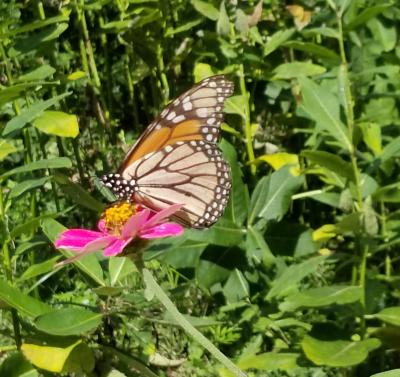Helping the Monarch Butterflies with Native Plants

Do you remember, as I do, our yards being filled with dozens of butterflies in the summer? It’s not that way anymore. Long Island has greatly grown in population and development since I was a kid, and the butterflies have lost much of their habitat. In particular, experts say the number of monarch butterflies has declined 80% in the last 20 years, due to the loss of open spaces with milkweed, the overuse of herbicides (weedkillers), and weather events caused by climate change. “Milkweed is the only plant monarchs can lay their eggs on and the only plant its caterpillar stage feeds on,” according to National Geographic. How can we help the monarch caterpillars? And feed butterflies in general?
By planting native plant and flower species!
Not only will this help the butterflies, because they drink the nectar of flowers, but bees and other pollinators, as well. Use this guide published by Long Island Native Plant Initiative:
http://www.linpi.org/native-plant-fact-sheets/native-forbs/
It’s too bad that milkweed has the word “weed” in it, because we actually need more of it for monarchs. And “butterfly weed” is really very beautiful! Here are the types of milkweed for different areas of the U.S.:
https://www.fs.fed.us/wildflowers/pollinators/Monarch_Butterfly/habitat/milkweed_list.shtml
So, if you can, don’t purchase a plant just because it’s pretty…try to see if it is native to Long Island!
Sources:
https://www.fws.gov/savethemonarch/
https://www.fs.fed.us/wildflowers/pollinators/Monarch_Butterfly/do/index.shtml

